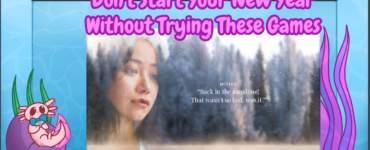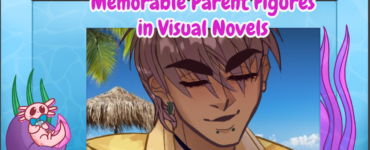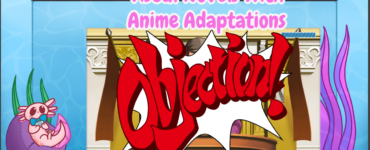Games are for everyone. Everyone should have the right to be able to enjoy the greatness that is video games, so it’s great to see the video game industry starting to explore options in accessibility so everyone can really enjoy video games. There are special controllers for people who might have difficulty operating a standard PlayStation or Xbox controller. There are colorblind and audio options being implemented. Now, it’s becoming a standard for these things to be implemented, and I couldn’t be happier that we’re at that point. However, visual novels are somewhat different from normal video games. What can a text-heavy game do to make itself more accessible to players? Today, I want to talk about some of the different options I’ve seen in visual novels and suggest what else the community can do.
Before we begin, I’d like to give a shout-out to minute, one of the people behind Heart of the Woods, a game that will make an appearance in this article. They released an accessibility add-on that allows Ren’Py developers to implement various options into their game. I recommend anyone who is interested or is already making visual novels to check it out.
Different Font Choices
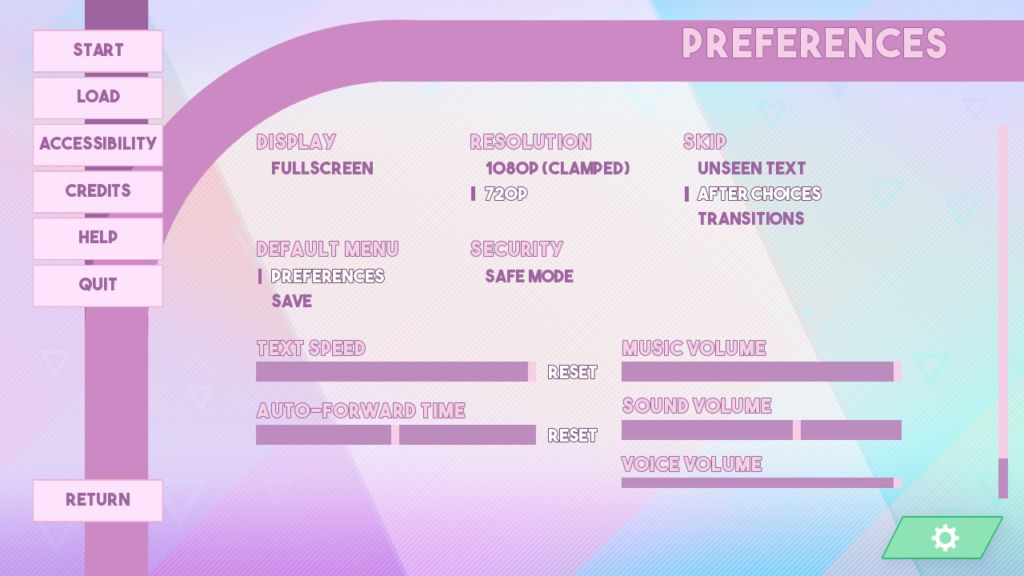
I’ve been seeing this one pop up more and more as time goes on. While a developer would always want to have a cool-looking font that suits their game, that may come at the cost of readability. There are games with big, blocky letters or which utilize cursive. While this is all well and good, we need to realize that some people might have difficulty reading those fonts. Players with dyslexia can have difficulty distinguishing one letter from the next, which can lead to frustration. That’s why utilizing multiple fonts is an excellent way to not only make a developer happy, but it’ll also make the reader happy.
OpenDyslexic is a popular dyslexic-friendly font commonly seen throughout media. It’s a font that I personally use in my games. However, OpenDyslexic isn’t the only dyslexic-friendly font out there, it’s just a popular and well-liked one. Using less crowded fonts, such as the popular Arial, Open Sans, or even Comic Sans, will aid in making a better reading experience.
Text Scaling and Spacing
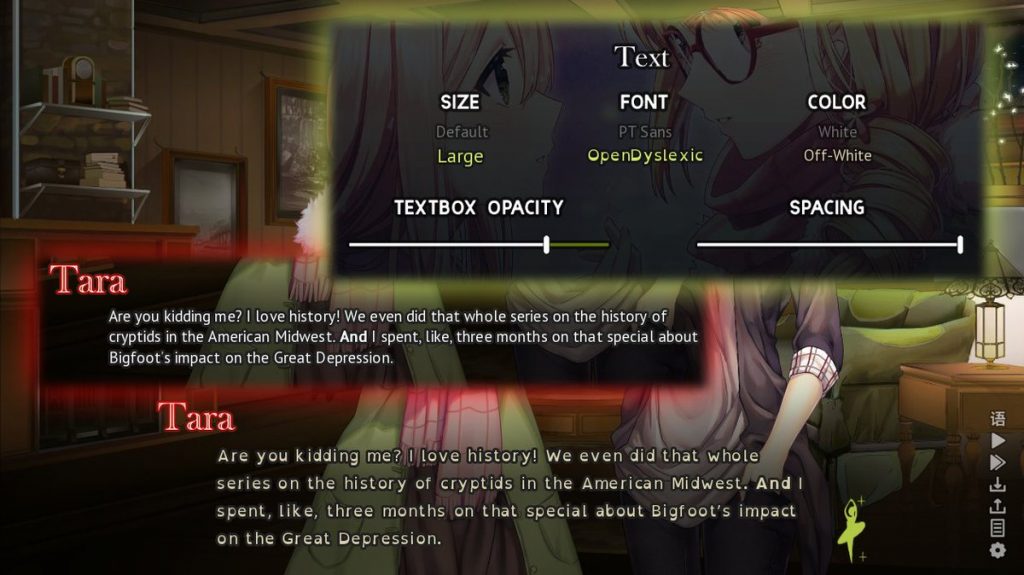
Text scaling and spacing helps make the text easier to read. As someone who has read her fair share of books in school with the tiniest text imaginable, I got incredibly frustrated that I couldn’t even read the text. Tiny text has even made its way into big games like Fire Emblem: Three Houses, where players sometimes have to use the Nintendo Switch’s zoom option just to read what the characters are saying.
Being able to make the text bigger makes it a whole lot easier for players, and they won’t be forced to squint their eyes and get closer to the screen.
The spacing option will determine how far each word is from one another. Not only does wider spacing make the text easier to read, but it allows for a much cleaner and less squished look.
Self-Voicing and Descriptive Text
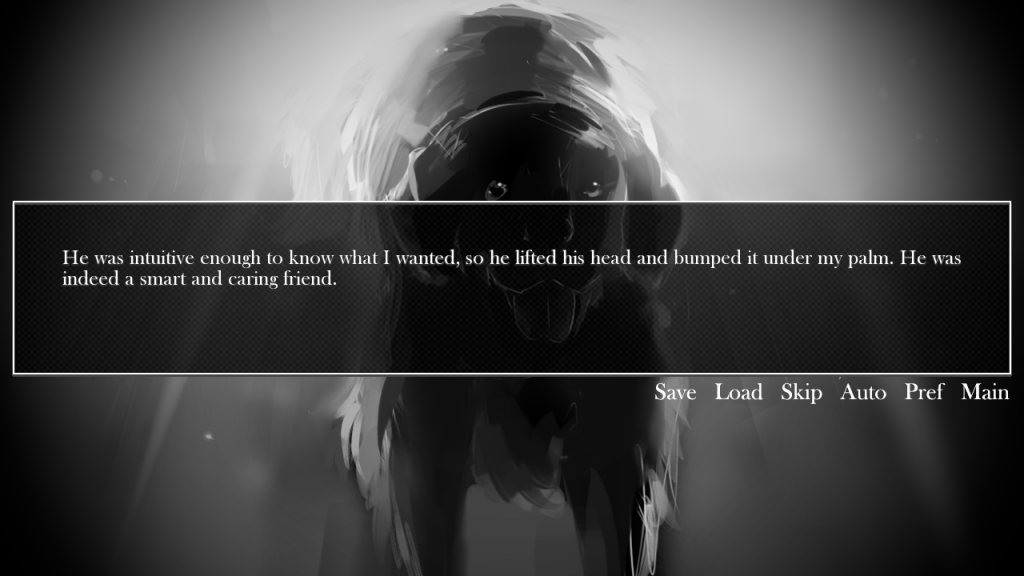
For visually impaired people, having text read out to them is a nice thing to have. However, it’s very rare to come across a title where the entire game is fully voiced, from dialouge to narration. Thankfully, thanks to something called self-voicing, everything in the script can be read aloud.
Self-voicing is when a text-to-speech synthesizer reads aloud the text and any other interface elements. This can range from the various options being read aloud when the player highlights over them with their cursor, sprite animations being described, and more.
In Ren’Py, you simply have to press “V” in order to activate self-voicing. Personally, I wish that you could pick an option at the start of the game to select whether or not you want self-voicing to be on. If you don’t know the keys that activate it, then you’re out of luck.
I should note that self-voicing, descriptive text, and other options like them can be found in some games’ preferences menu, which is a lot better than using a key combination.
What else can visual novels do to make themselves more accessible?
While I think visual novel developers are doing an excellent job at implementing accessibility into their games, there’s more we can do. Here’s a couple of suggestions that I have.
- More colorblind support – There are already some visual novels under the colorblind support tag on itch.io, but these visual novels are only a tiny drop in a big sea. The games under that tag have a colorblind-friendly UI or have options in their settings to change the colors, much like what you’d see in games like League of Legends. While it can be a hard thing to implement and a developer will have to tweak a lot with the game’s color palette, I think it’s worth it.
- Options to turn off phobias (e.g., arachnophobia) – In Obsidian’s latest title Grounded, a game centered around tiny humans fighting bugs, there is an option for players with arachnophobia to decide how scary the spiders are going to be in the game. They can strip the spiders down to just a bare model made up of circles and other various shapes.
- Controller support – Ren’Py allows players to use a controller; it’s already implemented into the engine. However, I recently received a complaint about one of my games not being easy to navigate via a controller. Right now, I’m looking into solving that issue. So, if there are any developers reading this, make sure your game works perfectly with a controller and that your GUI and menus aren’t difficult to navigate through with one. There are some players who can’t use a mouse or keyboard. For them, a controller is their way to play games. It’s a developer’s job to make sure that no matter what a player uses, they can go through our game with ease.
Conclusion
I want to make it clear that I’m not dogging on visual novels. Right now, I think developers are making great progress in making our games more accessible to readers. However, there’s always more to be done. While I’ve only listed a couple of options, there’s so much more out there that players are demanding. It’s our job to listen to them and cater to them as best as we can. If you’re a developer and unsure of where to start, I highly recommend checking out the Games Accessibility Guidelines website. It goes in-depth about various accessibility features for a lot of different types of disabilities.


